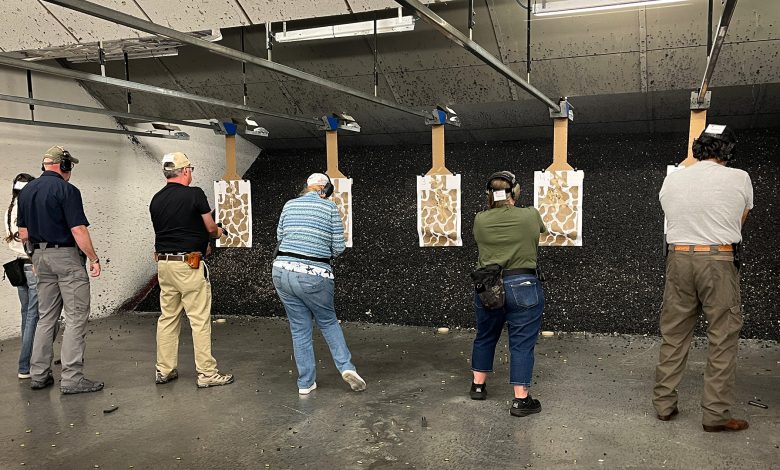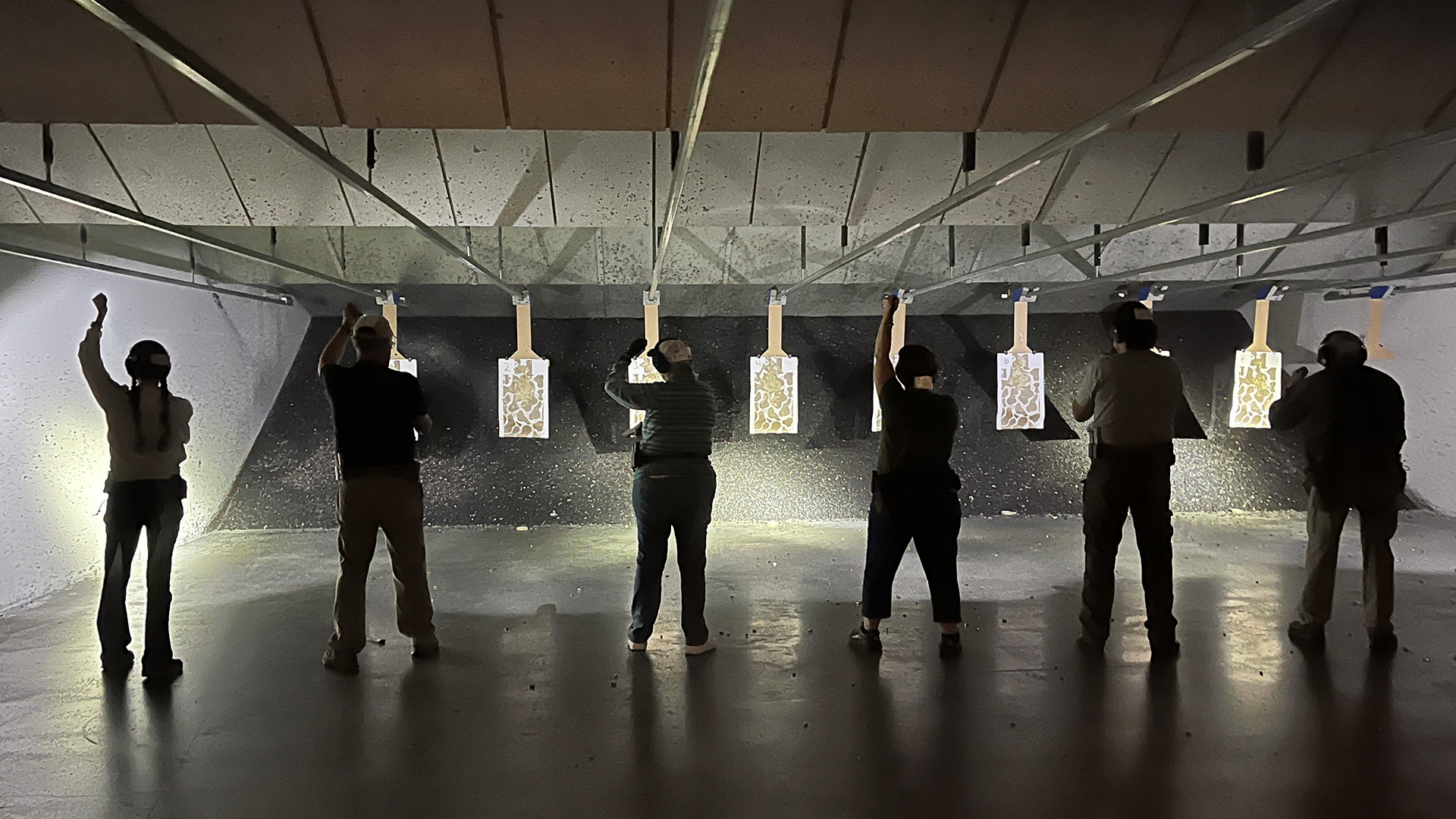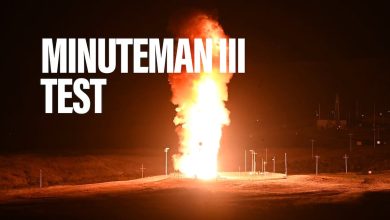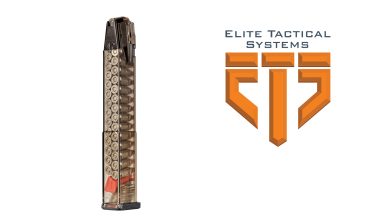Indoor Ranges Vs Outdoor Ranges

Gun ranges come in two flavors: Indoor ranges and outdoor ranges. A typical indoor range has each shooter stand in their assigned booth with a target that moves back and forth, out to distances that can range from 3 yards out to 100 yards. Outdoor ranges, on the other hand, come in two flavors. The first is a pistol bay or other open area, where the shooter has an enclosed area to themselves and can set up targets as they like and replace or move them on their schedule. The second type is similar an indoor range, where each shooter has an assigned lane and the targets are set up for each shooter. However, unlike an indoor range, each shooter has to wait for the others shooters to stop and make their guns safe, then go down range and set up a new target or moving their target to a new distance, along with all the other people at the range.
How does the actual shooting experience compare between an indoor range versus an outdoor range? To find out, I attended the inaugural Gunsite 150 class at Shooter’s World in Orlando, FL. I’ve taken a 150 before, but it was outdoors at Gunsite’s home range in Paulden, Arizona. This new class gave me a chance to do an “apples to apples” comparison of what the same class was like on an indoor range versus an outdoor range.
What Is A Gunsite 150, And Why Do You Want One?
Gunsite’s foundational class is the 250 pistol class, which covers the basics of defensive pistol marksmanship, the combat mindset and the application of those two skill sets under stress with the use of both indoor and outdoor simulators. The 150 pistol class covers the first two concepts, but omits the combat simulators. The 150 pistol class is an excellent first step after someone receives a concealed-carry permit, or for those who live in a permit-free state and choose to exercise their right to keep and bear arms. The class covered presentation from the holster, combat accuracy, multiple targets and shooting in low light situations (more on that later).
On The Outdoor Range
Being able to shoot reactive steel targets is another nice feature of an outdoor range.
Gunsite’s Paulden location is in the western portion of the high desert of Arizona, a few miles to the north of Prescott. As such, it gets cold in the winter and quite hot in the summer. My first class at Gunsite was many years ago in January, right before SHOT Show, and it was… not warm there. There were snow banks on either side of the range, and I stuffed hand warmers in my pocket to keep my trigger finger toasty.
Conversely, I attended an industry even there last year in May, and the brutal Arizona heat started to make an appearance. Ken Campbell, the CEO of Gunsite, attempts to alleviate the weather extremes with popsicles as needed, which helps, but the heat can wear you down no matter what precautions you take.
However, this points out one of the biggest disadvantages of an outdoor range: You’re outside, at the mercy of the elements. This is not a big problem on a nice day in spring, but where I live, in Florida, the heat can be stifling at times, and a sudden rainstorm can show up at a moment’s notice.
And we haven’t even mentioned the mosquitoes yet.
Advantages Of An Outdoor Range
The lack of a roof on an indoor range can put you at the mercy of the elements, but it also means the noise of your gun and all the guns around you disperse into the air and don’t echo back and forth around the walls of your range. Multiple people shooting rifles indoors can be a little overpowering, even with top-notch ear protection.
On top of this, there’s the ventilation question. Firing a gun produces all sorts of noxious fumes and sends a small pellet of copper and lead into the target. Neither of those metals are particularly wonderful for your body, which is why indoor ranges like Shooter’s World spend lots of money on top-notch filtration systems to cleanse the air of all this nasty stuff. Then there’s the freedom that having a pistol bay all to yourself, and suddenly, a few mosquitoes don’t seem all that bad.
Let’s Step Inside

It’s easy to shoot in a low light environment when you’re indoors.
Aside from its weather-proof nature, one of the biggest advantages of an indoor range is that they’re probably easier to get to than an outdoor range. The population of America is increasingly urban, so the chances of finding a 300-yard rifle range in the middle of the suburbs is iffy at best.
However, you can find indoor ranges in almost any part of a major metropolitan area. The infrastructure needs of an indoor range are similar to any other light industrial business, which means you can place one darn near anywhere it’s allowed by law.
Shooting On An Indoor Range Versus An Outdoor Range
From a practical standpoint, taking a Gunsite 150 pistol indoors versus an outdoor range was quite similar. There was a low-light portion of my 150, which on an outdoor range means waiting for darkness to fall. On an indoor range, though, all we needed to do was turn out the lights.
One thing that was different was scoring the Gunsite Drill, which goes as follows:
- 3 Yards: 1 Shot to the upper (head) target, 2 seconds or less (x2)
- 3 Yards: 2 Shots to the center chest, 2 seconds or less
- 5 yards: 2 Shots to the center chest, 2 seconds or less
- 7 yards: 2 Shots to the center chest, 2.5 seconds or less
- 10 yards: 2 Shots to the center chest, 3 seconds or less
All shots taken from the holster.
On the line outside at Paulden, the times for each stage were regulated by targets which turned away once the time limit for each stage was met. Indoors at Shooter’s World, our instructors had to test each student individually using a shot timer.
Which Is Right For You?
If I’m honest, I prefer the flexibility of having a shooting bay all to myself. I can set up targets at whatever distance and configuration I want, and don’t have to wait for a range officer to call the line cold before I adjust them.
However, there is a lot to be said for the convenience and ease of use of an indoor range. I’ve had many training days cut short by nearby lightning strkes, so there advantages to being able to shoot when the weather turns nasty.
In the end, though, the important thing is that you get your practice in and push yourself to be better, no matter if it’s on an indoor range or an outdoor range. Get out to the range, and practice as if your life depends on it.
Because someday, it just might.
Read the full article here


![6 New And Upcoming Guns To Watch Out For This 2025 [SHOT SHOW 2025] 6 New And Upcoming Guns To Watch Out For This 2025 [SHOT SHOW 2025]](https://tacticalgunstores.com/wp-content/uploads/2024/11/1730966977_maxresdefault-390x220.jpg)




